
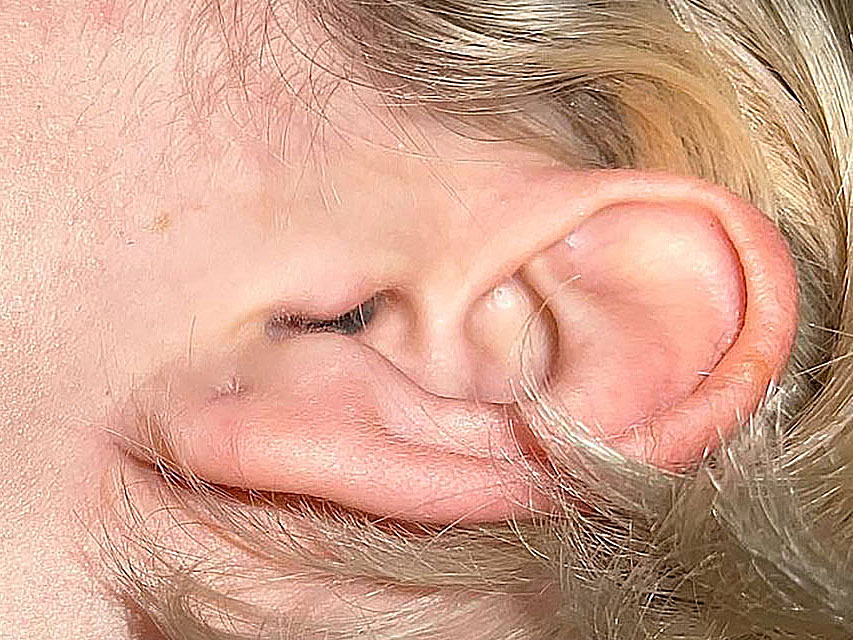

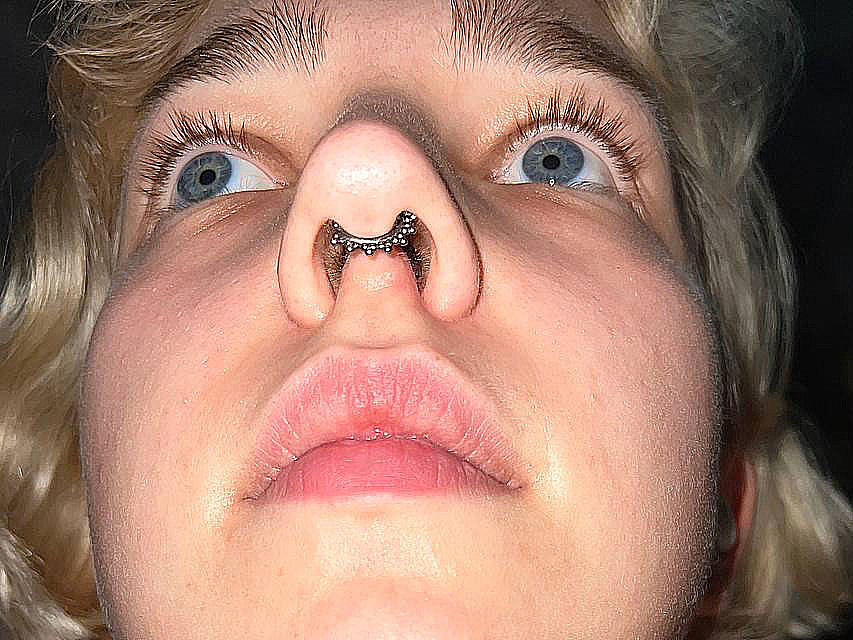























Fluidity is an experimental video consisting of two layers. In the foreground, a facial recognition AI has analyzed various images of my body. The images used do not necessarily contain a face, yet the AI tries to detect one and does not notice its absence. The AI relies on its test dataset and is heavily influenced by its limited training purpose.
The resulting images show how the network analyzes the input and in which arrangement of pixels it finds the highest probability of a face. Since it is not able to conclude that there is no face, it recognises them where there are none. It also blurs the individual images through semantic interpolation, so that there is no longer a clear starting and ending point; instead, intermediate states emerge.
 |
 |
 |
 |
 |
 |
 |
 |
 |
|---|---|---|---|---|---|---|---|---|
 |
 |
 |
 |
 |
 |
 |
 |
 |
 |
 |
 |
 |
 |
 |
 |
 |
 |
The film is a metaphor for gender fluidity and gender dysmorphia which results from ongoing categorization from the outside. It breaks with the binary and static system by which gender is managed in modern western society: Gender serves as a starting point for every interpersonal interaction. The division into "male" and "female" provides a framework for social manners and hierarchies. In reality, however, this two-gender system does not apply; instead, it is merely a social reflex to a multidimensional biological issue. In the disciplines of Machine Learning and Data Science, classification plays just as important a role: a data object is assigned to a class based on the variables associated with it in order to arrive at a meaningful result. The AI at hand here assigns gender, age and more to the faces it believes to recognize.
Gender is an anchor, and once people decide what you are, they interpret everything you do in the light of that(Kessier/McKenna 1978: Gender: An Ethnomethodological Approach, S.6).
“[...] the ‘doing’ of gender is undertaken by women and men whose competence as members of society is hostage to its production. Doing gender involves a complex of socially guided perceptual, interactional, and micropolitical activities that cast particular pursuits as expressions of masculine and feminine ‘natures.’ When we view gender as an accomplishment, an achieved property of situated conduct, our attention shifts from matters internal to the individual and focuses on interactional and, ultimately, institutional arenas. In one sense, of course, it is individuals who "do" gender. But it is a situated doing, carried out in the virtual or real presence of others who are presumed to be oriented to its production. Rather than as a property of individuals, we conceive of gender as an emergent feature of social situations: both as an outcome of and a rationale for various social arrangements and as a means of legitimating one of the most fundamental divisions of society.(West/Zimmerman 1987: Doing Gender, S.126).
The short film WHAT YOU SEE IS WHAT YOU GET explores the idea of “doing gender”, which sees gender as a performative and dynamic state. It follows that gender is not a property of the individual, but is produced from a interpersonal process and is a societal reflection on nature. It is to be conceived as an ongoing process of production [...] performed along with factually every human activity
(Gildemeister, 2008: Doing Gender: Social Practices of Gender Differentiation, S.132).
Characteristics such as clothing and hairstyle serve to categorize sexual gender in everyday life. Every other social interaction builds on this categorization. However, they are not a permanent condition, but are interchangeable. Interpersonal contact and the formation of hierarchies can vary with an individual's presentation. The film explores how masculinity or femininity, as well as the permissiveness of clothing, affects the categorization of a person.
The digital distortions that take place in the video are based on time. For example, different frames are sampled simultaneously or past moments are captured and remain visible. This is reflected in the everyday interaction of an individual with his environment. Presenting one's gender creates a reaction, which in turn is received and processed. Thus, one is in constant communication and is always doing gender. However, there is no mixing of the different states - each new presentation is a new iteration in the process.
One symptom of ADHD is great diffculty in focusing on a task and blocking out external stimuli. This sculpture of a hand is continuously waving, which is a rather monotonous task. However, as soon as one of the motion sensors goes off, meaning, somebody has entered its periphery, the hand turns to the new distraction. Only when it is undisturbed and therefore unobserved is it able to continue with its task.
ADHD is diagnosed much less frequently in the female gender. However, this is not because the disorder is less common, but because it is often misdiagnosed. This is partly because the symptoms often present differently in girls during childhood, and partly because of a gender bias that is prevalent among medical personnel. Coming from a female artist, this sculpture aims to highlight this.
This installation does not reflect every person’s experience, as ADHD manifests through different behavioral patterns like inattention and hyperactivity-impulsivity. Rather, it is an intrapersonal representation of how the symptoms are dealt with.
QR codes would have almost disappeared from public perception and been deemed as a dead technology, had it not been for the pandemic. Their revival inspired this project, which combines two mediums with very unequal lifetimes: QR codes, which link to the fast-paced WWW, and tattoos, which stay with their wearer for a lifetime.
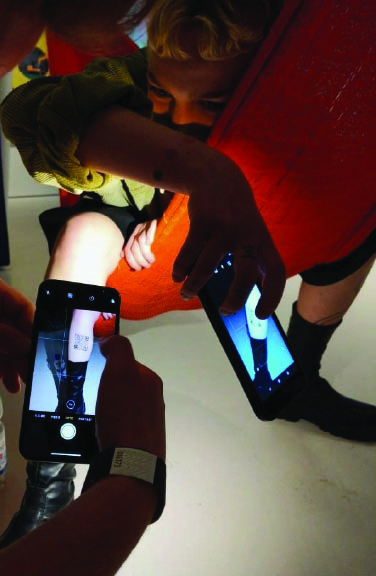 |
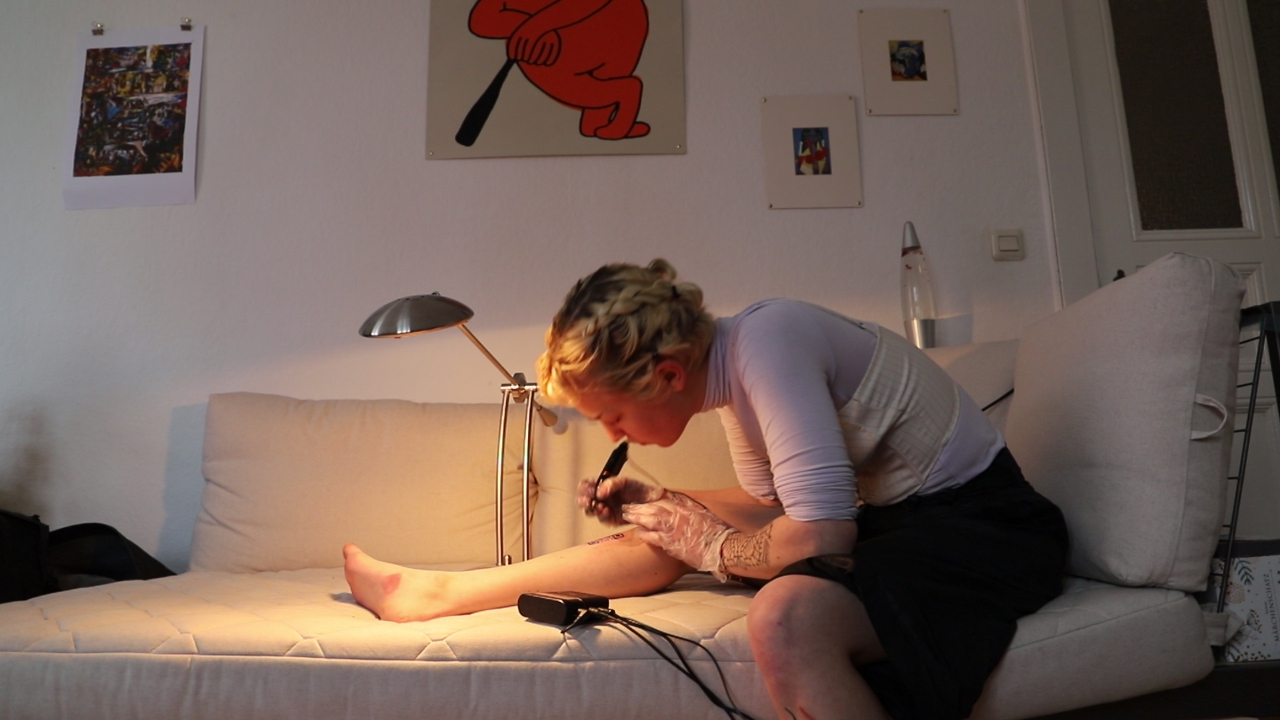 |
|---|
The motive of the tattoo is a QR code, but the actual meaning behind it is not visible at first glance, only after scanning the code and looking at it on your phone. The image is removed from the body and uploaded to the internet, where its permanence is overcome and replaced by the interchangeable and unlimited possibilities of the digital. Doing this allows the wearer to change the meaning and virtual image whenever they feel like it.
Which website the QR code points to is actually not that important. At this point, it's an archive of my favorite memes and tiktoks over time, pointing to the permanent change that the internet is subject to. The actual content itself holds very little meaning, just like internet trends do, its only purpose being entertaining and somewhat funny.
Mental Unfolding is a 3D animated short film that creates a digital landscape and translates it into our understanding of spacetime. It follows philosopher Jörg Noller's definition of digitality:
Digitality denotes a specific ontology of the lifeworld that obeys its own space-time logic and is characterized by virtuality. It emerges from the technological phenomenon of digitalization and is not reducible to it without loss of meaning [...].(Jörg Noller 2023: Forschungsthesen: Philosophie der Digitalität, joerg-noller.com).
The laws of digitality are stated as follows:
Ubiquitous Presentism refers to digital objects being defined by their placelessness and timelessness. They exist in a referential relationship to one another and stand in horizontal relations of networking, which are subject to permanent change.
Interobjectivity describes the ontology of the relationships between actors in the digital. Since objects can communicate in the digital like subjects, the boundary between object and subject becomes blurred.
Transsubjectivity means that thoughts, ideas, opinions, and statements are no longer connected to their creator, but become an externalized ontology. (Uta Hauck-Thum / Jörg Noller 2021: Was ist Digitalität? Philosophische und pädagogische Perspektiven, S.46-48).
The scenes depicted reflect the parallel existence of homogeneous digital spaces as well as the semantic links between these spaces. The digital is used as a means of communication and archiving, and the events that take place there are real, although virtual and sometimes automated.
The main actor of the movie itself represents the digitalisation of the human body. By losing not only its physical features but also the connection to the original person, the digital representation has become its own subject. It being the only prominent actor in its respective digital space and the interconnections between the doppelgangers creates an echochamber similar to the algorithmic filtering of content based on the liking and behaviour of its consumer.
The poem spoken in the background is written by GPT-3, an autoregressive language model that uses deep learning to produce human-like text. GPT-3's training set consists of datasets created through web crawling, resulting in a large and filtered internet archive. Given a short prompt to write a poem about digitality, this training set serves as a resonance space through which the poem loses the creator’s originality and instead is written by the collectively accumulated knowledge of the internet.
CHOM5KY vs CHOMSKY is a playful mixed reality experience that invites visitors to immerse themselves collaboratively in the world of artificial intelligence. Lured by one of the greatest visions of artificial intelligence - replicating human thought and perhaps even emulating one of the most famous minds of our time - we meet a unique mentor who accompanies us on this journey: Chomsky_AI, an artificial intelligence created from an arsenal of countless videos, lectures, and texts by world-renowned linguistics professor Noam Chomsky.
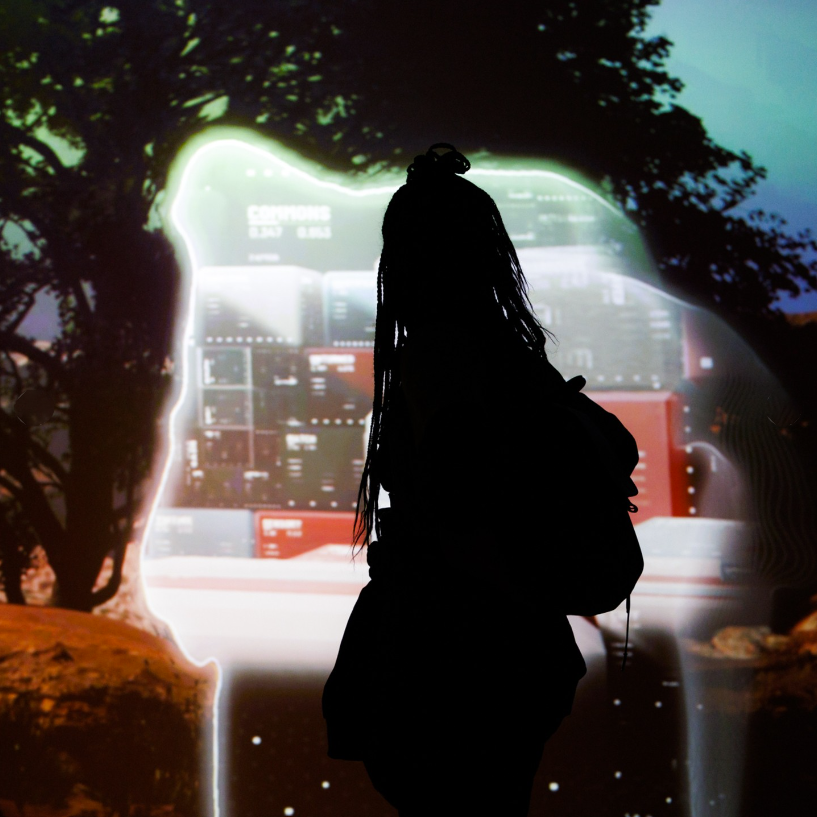 |
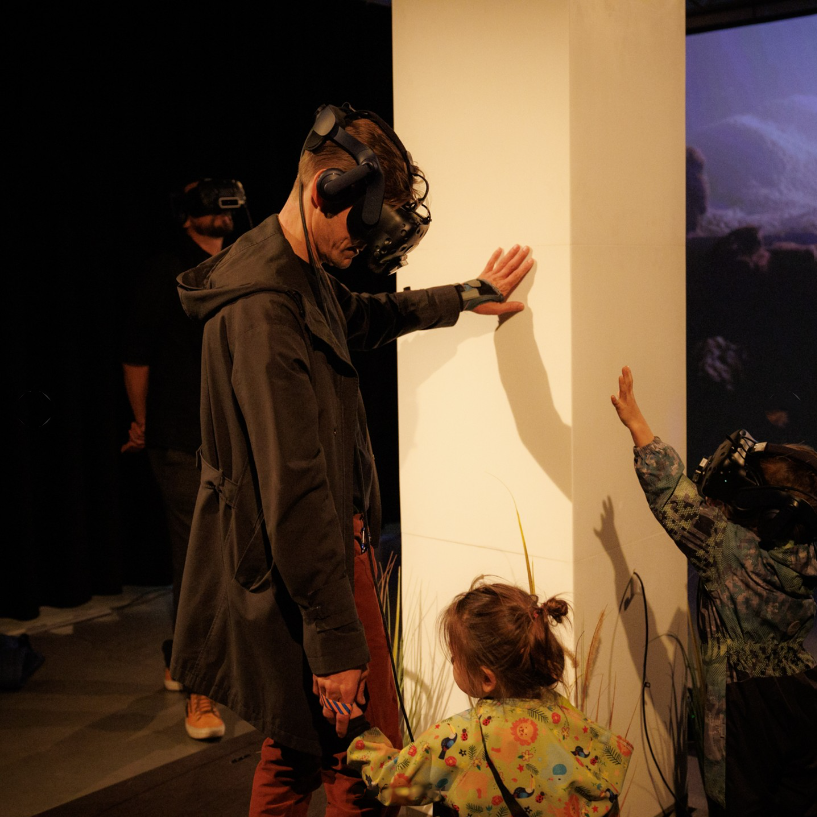 |
 |
|---|
As we talk to him, listen to him, and ask him questions, we playfully learn more about machine learning, the limitations of AI, and the difference between artificial and human cognition. But we are also challenged:
How can we replicate the human mind when we know so little about it? What is simulated by AI, and what is left behind? Is there a difference between human and artificial intelligence?
CHOM5KY vs CHOMSKY was exhibited at KINDL - Zentrum für zeitgenössische Kunst in autumn 2022. I worked on this project during my time at schnellebuntebilder for a year together with NFB Canada, MooveAI and KlingKlangKlong.
The Interactive Forest is an interactive video installation in the Ethnological Museum at Humboldt Forum and is aimed at children between the ages of 6 and 12. It is a wall and floor projection that reacts to visitors' movements and position in the space, thus conveying the experiential nature of the forest and its significance for indigenous life realities.
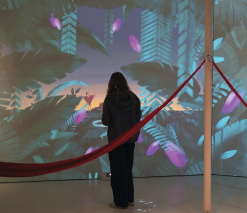 |
 |
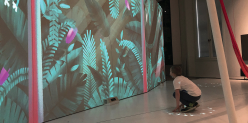 |
|---|
As part of the ‘Familienflächen’, one of the main aims of the station is to enable young visitors to experience the Amazonian habitat in its complexity as a natural, symbolic, mythical and social place and to show the interconnections between indigenous, traditional and modern dynamics. Reference is also made to modern problematic aspects such as the mining of raw materials, resource extraction, etc.
This Interactive Forest was opened to the public in summer 2022. I worked on this project during my time at schnellebuntebilder for a year together with Markenfilm SPACE and the curating team of the Ethnological Museum at Humboldt Forum.
TARMAC Festival is an electronic music festival that takes place annually at the Allstedt airfield near Halle. It is organized by several art and culture collectives from Halle and Leipzig. In summer 2022 we, a loose interdisciplinary collective of 20 people, built the Polynoiseon at the festival in a period of two weeks. It was conceptualized as a space for art installations and as a stage for cultural programs such as theater and performances. Together with the Nest, a venue for readings and panel discussions, and the Workshop Space, the Polynoiseon constitutes the festival's cultural program.
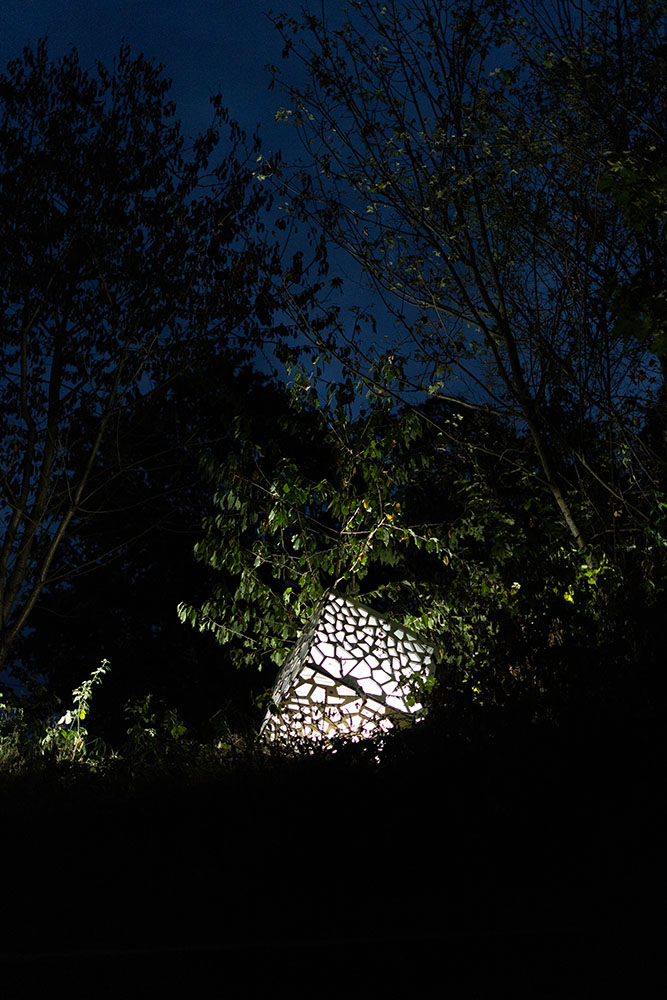 |
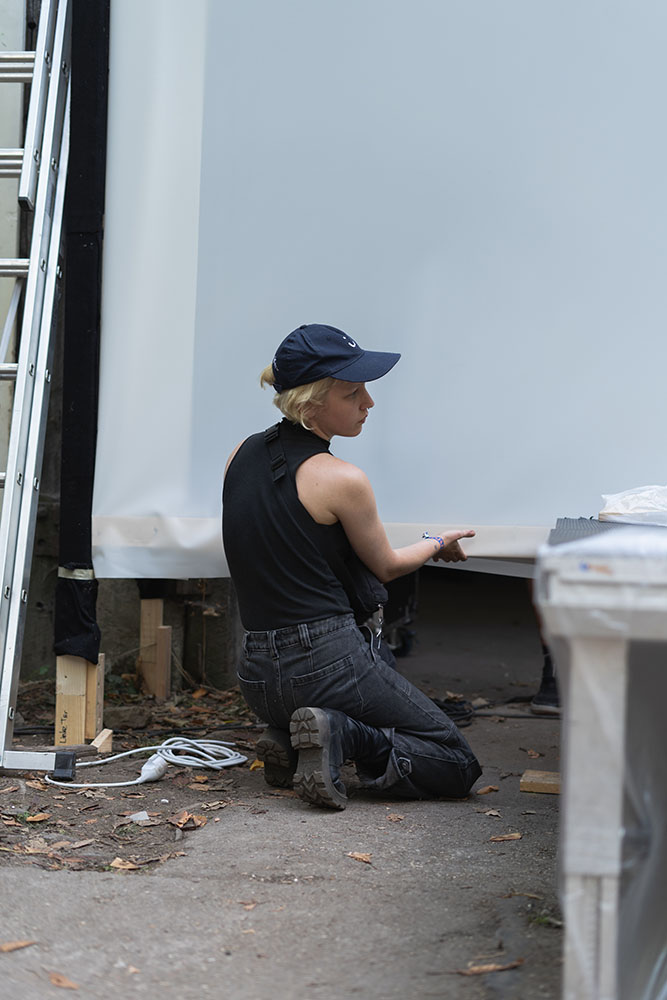 |
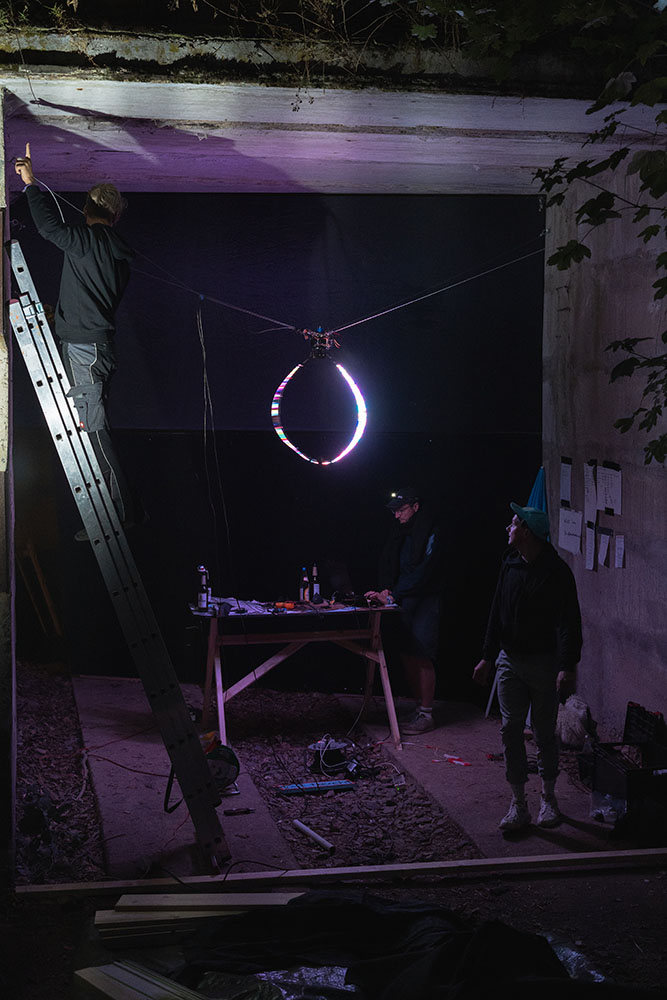 |
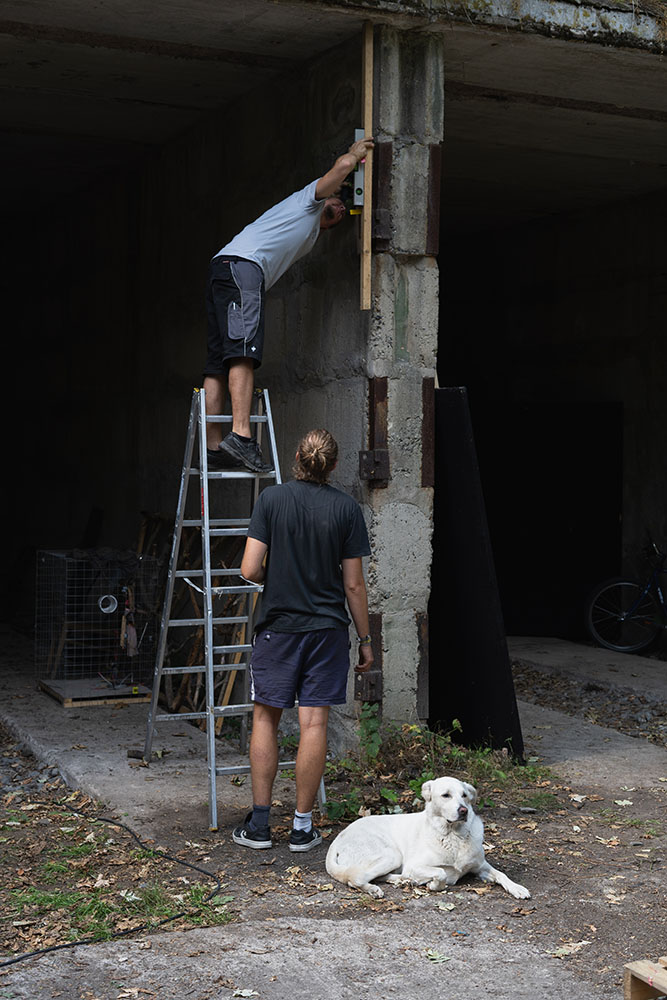 |
 |
|---|
The main installation on the Polynoiseon consists of the stage and two mapping surfaces, which are played with interactive visuals at night. The visitors can enter the stage and are tracked by a Kinect. The visual and interactive design was realized by several artists in a collective.
My main tasks were the organization of the project, the design of the projected visuals and the technical support of the installation.
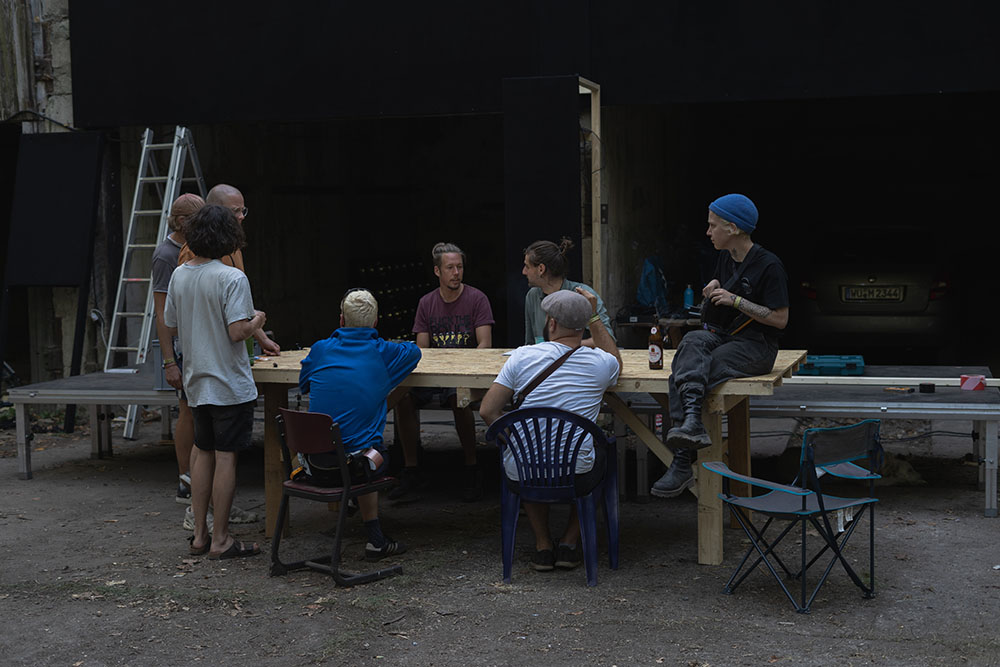 |
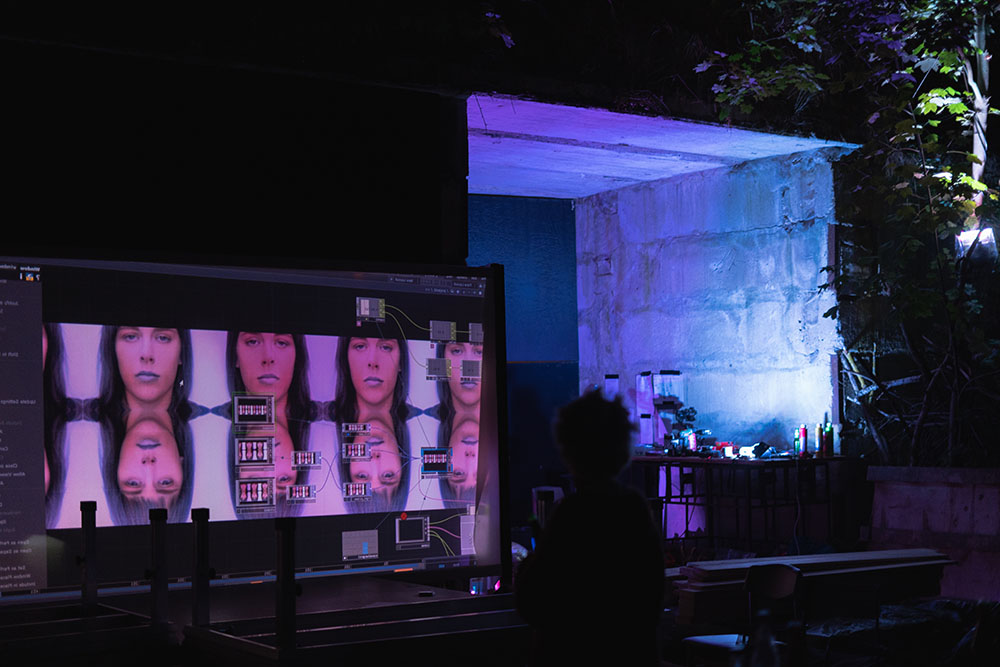 |
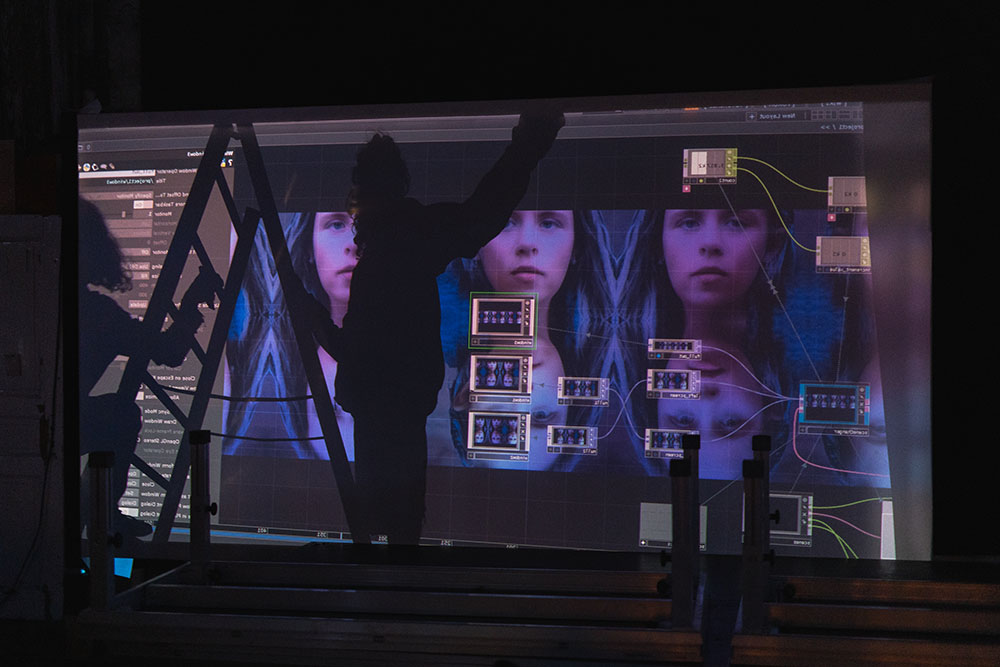 |
|---|
The concept of Polynoiseon derives from polygons and noise. These are the cornerstones on which Computational Art is built. Polygons are geometric shapes that a computer can systematically map, and yet they are still variable in their form and multilayered. Noise is an algorithmically generated pattern of randomness, an ordered state of chaos, and a superposition of many signals. The interplay of these two concepts is also reflected in the presentation: different exhibits alternate and crash into each other, each with new visualizations and possibilities for interaction and by different artists.
Elisabeth Scholz
Fontanestraße 32
12049 Berlin